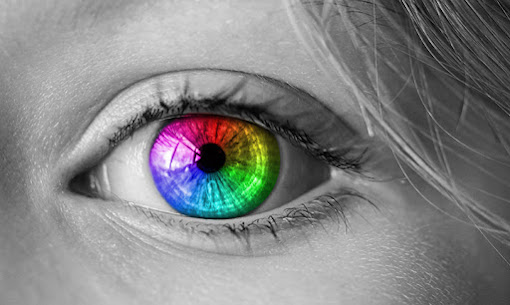Colorblindness and How One Company Is Helping to Fix It
Being a color blind photographer obviously poses some major issues. Having CVD myself, I’ve spent a lot of time researching what it means in order to combat this deficiency and know how it’s affecting my work. Since this condition is fairly common in men, there are some well-known photographers that suffer from it as well, Joel Grimes being the best example.
Like most, I was diagnosed when I was a child. My parents noticed that the names I assigned certain colors were not in fact those colors. Dark and very light colors seem give me the most trouble. Dark red and green often look the same to me. Most of the time, I don't see pink at all; to me, it's light gray. Fortunately, bright and primary colors don't give me any trouble.
Luckily for me, my color blindness is fairly mild and doesn’t affect my work for the most part. The time that I have to be most careful is when it comes to printing. It's often very difficult or even impossible for me to see a color cast on a photo. For instance, when I was in college, my professors pointed out on multiple occasions that my photos had a red or magenta color cast, which I was totally oblivious to.
Another instance of when my vision affected me that clearly sticks out in my mind was when I was working on solving a 12-sided Rubik's cube. Two of the colors looked identical to me, leading the cube to be solved improperly.
Color Vision in a Nutshell
Color vision is similar to pixels on a camera sensor when it comes to sensing color. There are parts dedicated to sensing each individual color. There are two types of photoreceptor cells in the retina of the eye: rods and cones. Cones are what sense color and work best in relatively bright light.
There are three types of cones: S-cones, M-cones, and L-cones. Each type of cone is sensitive to a range of wavelengths of visible light. Rods are sensitive in low light, but are not very sensitive to color. This is why everything appears monochromatic to us in low light.
Both rods and cones contain photopigment molecules that undergo a chemical change when they absorb light. This chemical change triggers electrical signals that are passed from the retina to the visual parts of the brain, resulting in vision. Each person perceives vision differently due to our differences in physiology. Even if I didn’t have CVD, my red would be different than your red.
The Cause of Color Vision Deficiency
The term "color blind" is used very often, but the term "color vision deficient" is more accurate in most cases. Most people are not truly color blind and can see most, if not all colors to some degree. There are three main kinds of color blindness, each affected differently by the three different types of cones. Red-green color blindness is the most common, followed by blue-yellow color blindness. A complete absence of color vision is rare.
CVD affects 1 in 12 men (8%) and is much rarer in women, affecting only 1 in 200 (0.5%), genetics being the cause. Men are much more likely to be colorblind than women because the genes responsible for the most common inherited color blindness are on the X chromosome. Males only have one X chromosome, while females have two X chromosomes.
In females, a functional gene on only one of the X chromosomes is enough to compensate for the loss on the other. This kind of inheritance pattern is called "X-linked" and primarily affects males. Inherited color blindness can be present at birth, begin in childhood, or not appear until the adult years. Below are two diagrams, the first depicting normal color vision and the second depicting color deficient vision.







Comments
Post a Comment